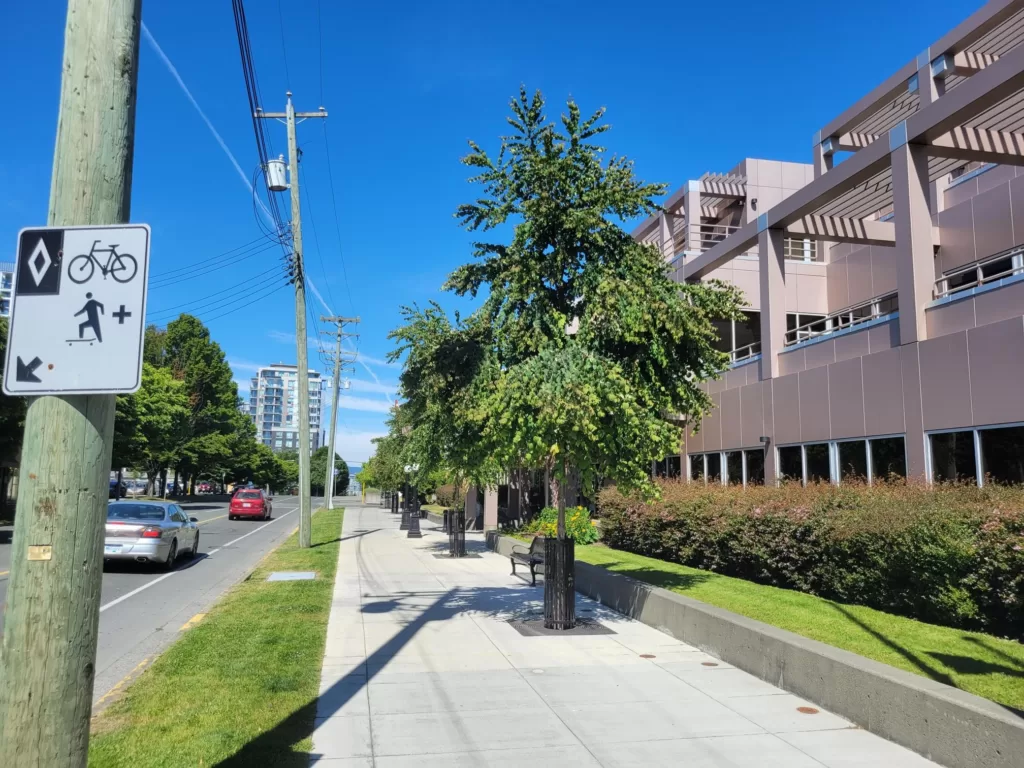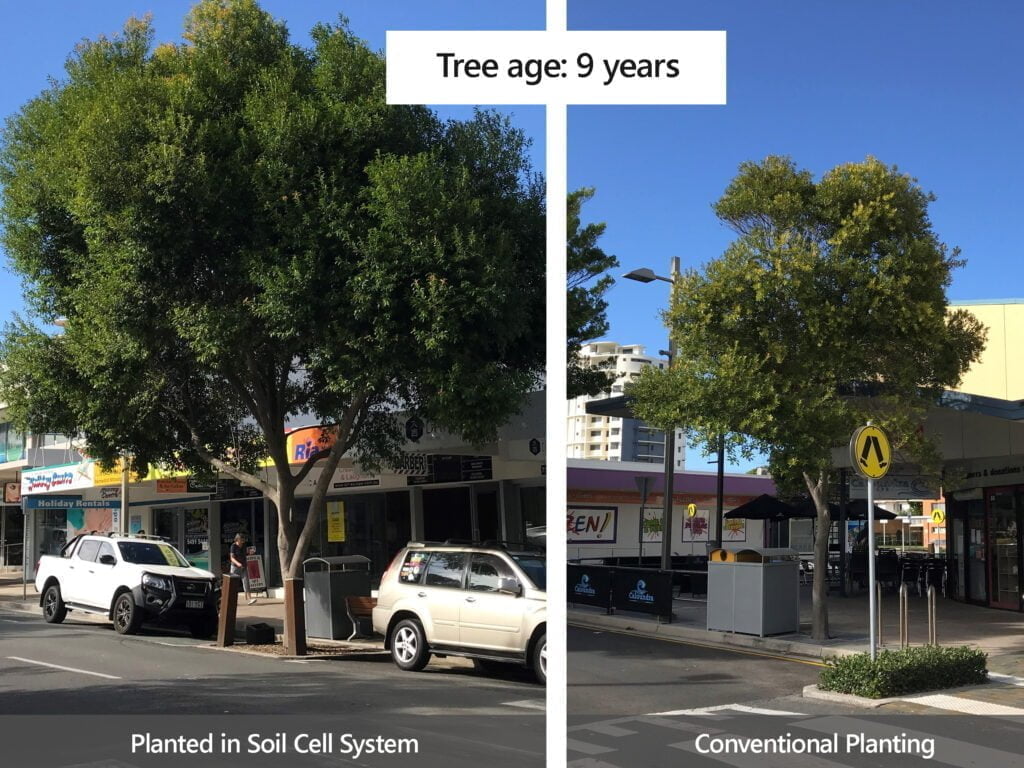Posted by Christina Greene on Mon, Jun 16, 2014 @ 8:41 PM
How Quality Soil Grows Healthy Street Trees

Quality Soil Equals Healthy City Trees
by Richard J. Magill
When installing trees in urban environments such as a streetscapes, plazas, sidewalks, city medians, courtyards, and car parks it is important to specify and utilize soil that meets the specific needs of the particular city tree species being planted, relative to project requirements. What follows are a number of guidelines and suggestions for the development of soils that promote the sustainable growth of most woody landscape plants in urban environments.
How Much Soil Do Street Trees need?
Trees need significant volumes of low-compaction soils, with suitable pore space, drainage, and organic matter to provide for long-term growth. A good rule of thumb for preserving older trees and assuring the success of new plantings in urban environments is to use large amounts of loam soils; comprised of varying percentages of sand, organic compost, and clay silt. The ratio of the ingredients listed above will vary depending on the requirements of specific plants, identified stormwater management objectives, intended land use, and the natural or man-made constraints of a particular site.
Because individual city tree projects and site conditions vary so dramatically, it is often necessary to adjust the soil ingredient mixture accordingly. Simon Leake, principal of Sidney Environmental Soils Laboratories (SESL) in Australia, favors a “Logical Approach to Soil Specification”. This approach promotes the idea that performance-based specifications are more effective than “recipe-based” soil specifications. Leake’s laboratory specifies the pH value, nutrient content, CEC (cation exchange capacity), OM (organic matter) content, permeability and whatever other properties they think necessary to compose a project-appropriate soil, rather than rely on a set recipe. These “fit for purpose” soils will optimize the water, nutrient and aeration properties to be consistent with the intended use. However, Mr. Leake cautions: “This is always a compromise between availability, cost and intended use.”

A commonly used field-reference for planting soil is: two cubic feet of loam soil for every one square-foot of tree canopy (at approximate tree maturity). Simply stated, a mature tree that provides 400 square-foot of canopy should be planted with 800 square feet of quality soil. Studies indicate that the quality loam soil grows trees that have 300 times more leaves and are 1.7 times taller than those grown in compacted soils.
Developing effective soil is a science, and it should be customized to meet individual site-demands, but it is important to point out that certain traits are universal for all quality soils, regardless of the application. These traits should include: a relatively high percolation rate to avoid prolonged surface ponding, a large capacity to sequester pollutants as water moves through it, and the nutrients necessary for vigorous plant growth.
Simon Leake of SESL points out that there have been a number of advances in soil technology in recent years, including:
- “Gap-graded” soils that cope with compaction issues from increasing population and resulting uses. “Gap-graded” means that in the particle size grading there is a “gap” where no or few particles of a certain size exist, whereby insuring that there is sufficient pore space in the soil to resist compaction from pedestrian or other traffic. These soils are specified by the United States Golf Association for heavily trafficked turf areas, such as greens and tees, and are increasingly employed by sports field designers and urban parks, because they have better water and nutrient-holding capabilities, and improved compaction resistance.
- Less use of “structural soils”. Even though these “soils” continue to have their applications, they only contain 20% of useful soil for root zone volume. Structural soil cell systems like those manufactured by Citygreen®, are much more effective for optimal tree growth in urban situations. Soil cells allow for the use of quality, non-compacted loam soils, and provide the root-zone space necessary for vigorous healthy city tree growth.
- Improvement of urban stormwater runoff management by using sandy filtration-type soils to improve water quality for irrigation and other uses.
 Promotion of stormwater harvesting through the use of gap-graded soils that filter the runoff prior to discharge or storage. Filtered stormwater can be directed from street drains and culverts to enhanced tree pits whereby significantly reducing irrigation and maintenance.
Promotion of stormwater harvesting through the use of gap-graded soils that filter the runoff prior to discharge or storage. Filtered stormwater can be directed from street drains and culverts to enhanced tree pits whereby significantly reducing irrigation and maintenance.
Today, green design and building professionals better understand the need for quality soil for healthy street tree growth in difficult urban environments. But even armed with this knowledge, city trees are often planted improperly due to design constraints, budgetary issues, and substandard installation practices.
Design guidelines that require the use of site-specific quality soil, and innovative structural support systems should be considered and adopted into the local building codes to insure that the use of appropriate materials becomes standard operating procedure for urban landscaping projects. Increased diligence by all of the key decision-makers in the approval, design, and installation of urban infrastructure will promote the use of quality soils and innovative support structures to insure healthy city trees, and the long-term success of our urban forests.
Interested to learn more? Get our FREE Ebook “Tips for Specifying Street Trees”

